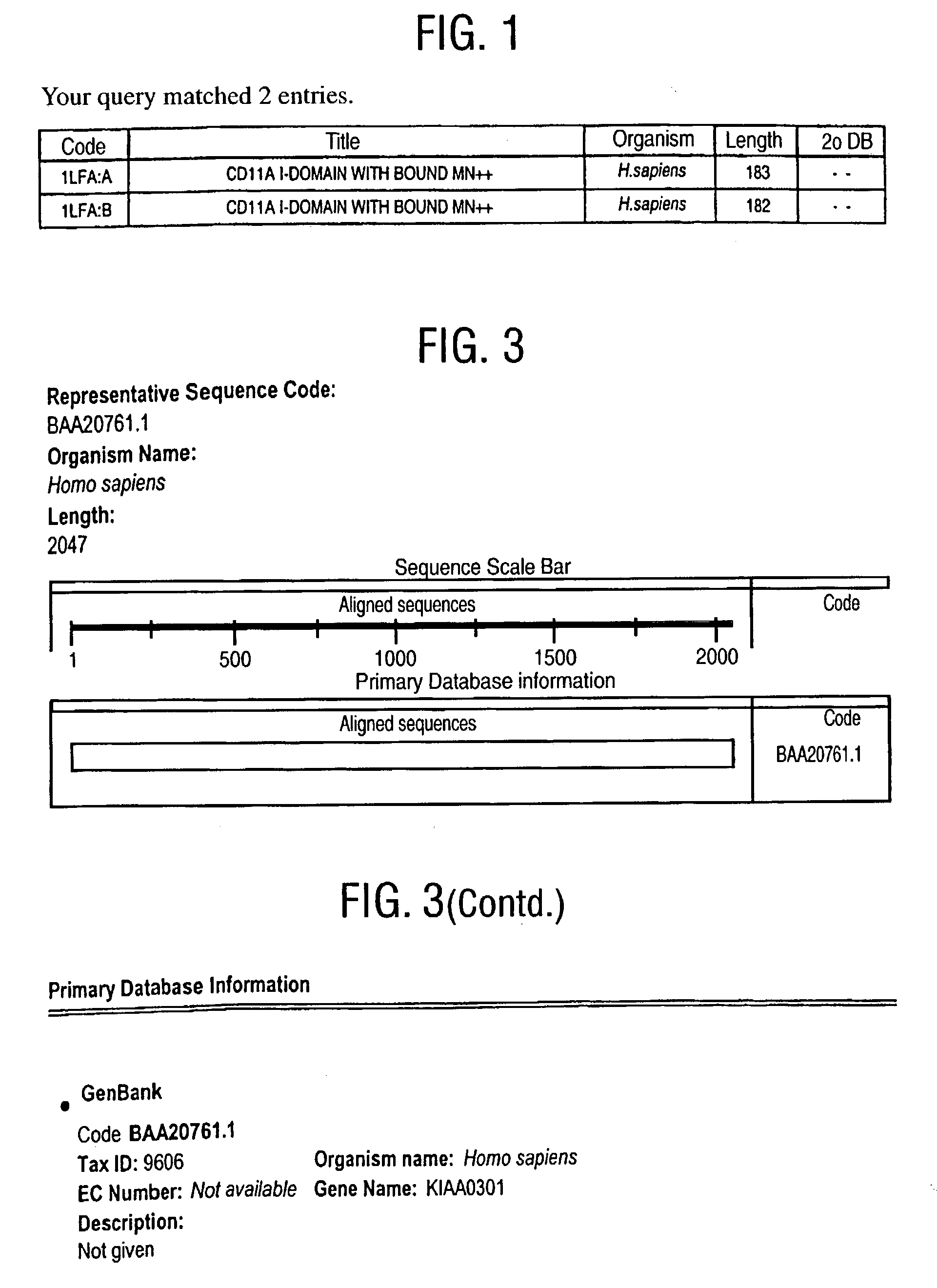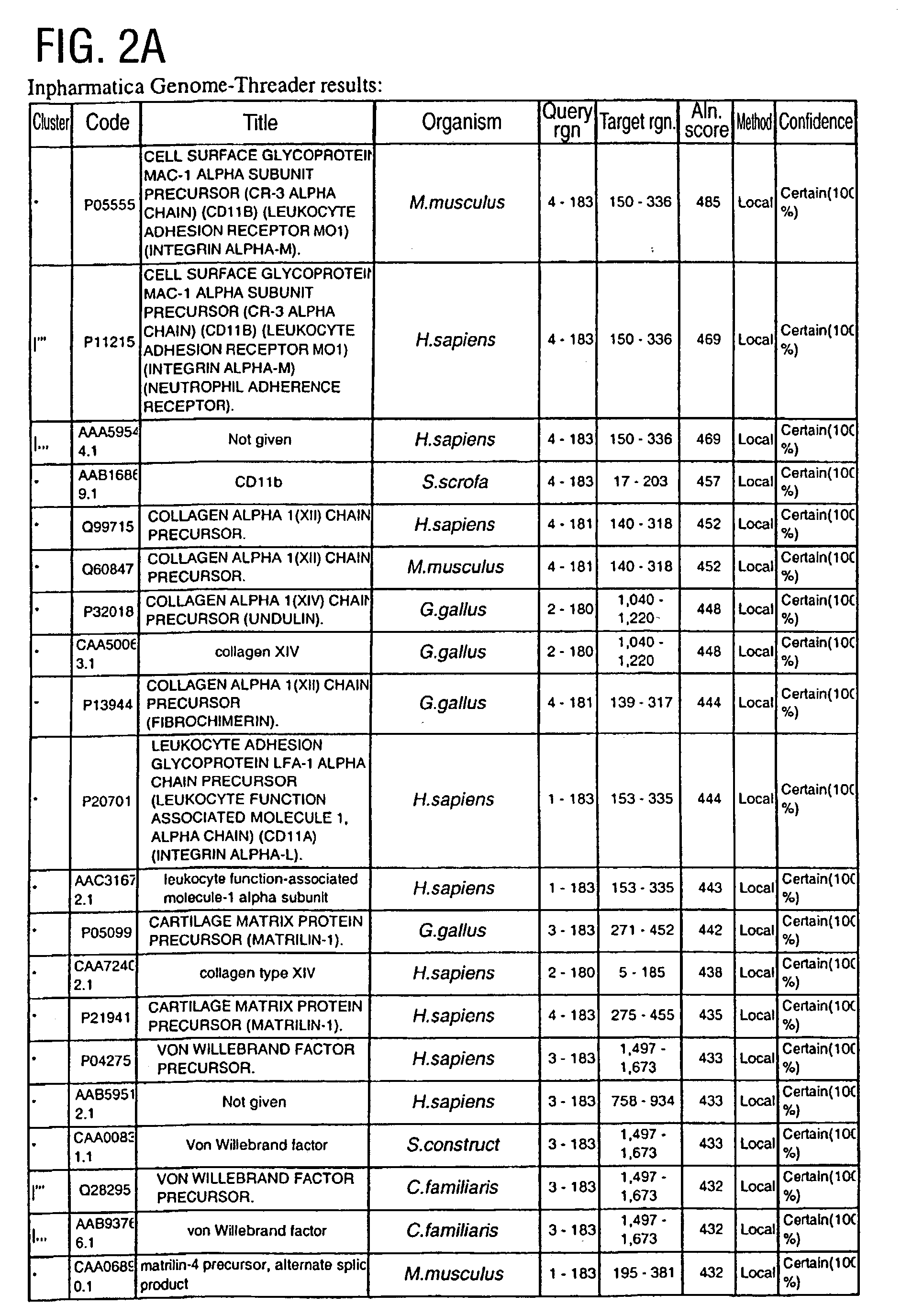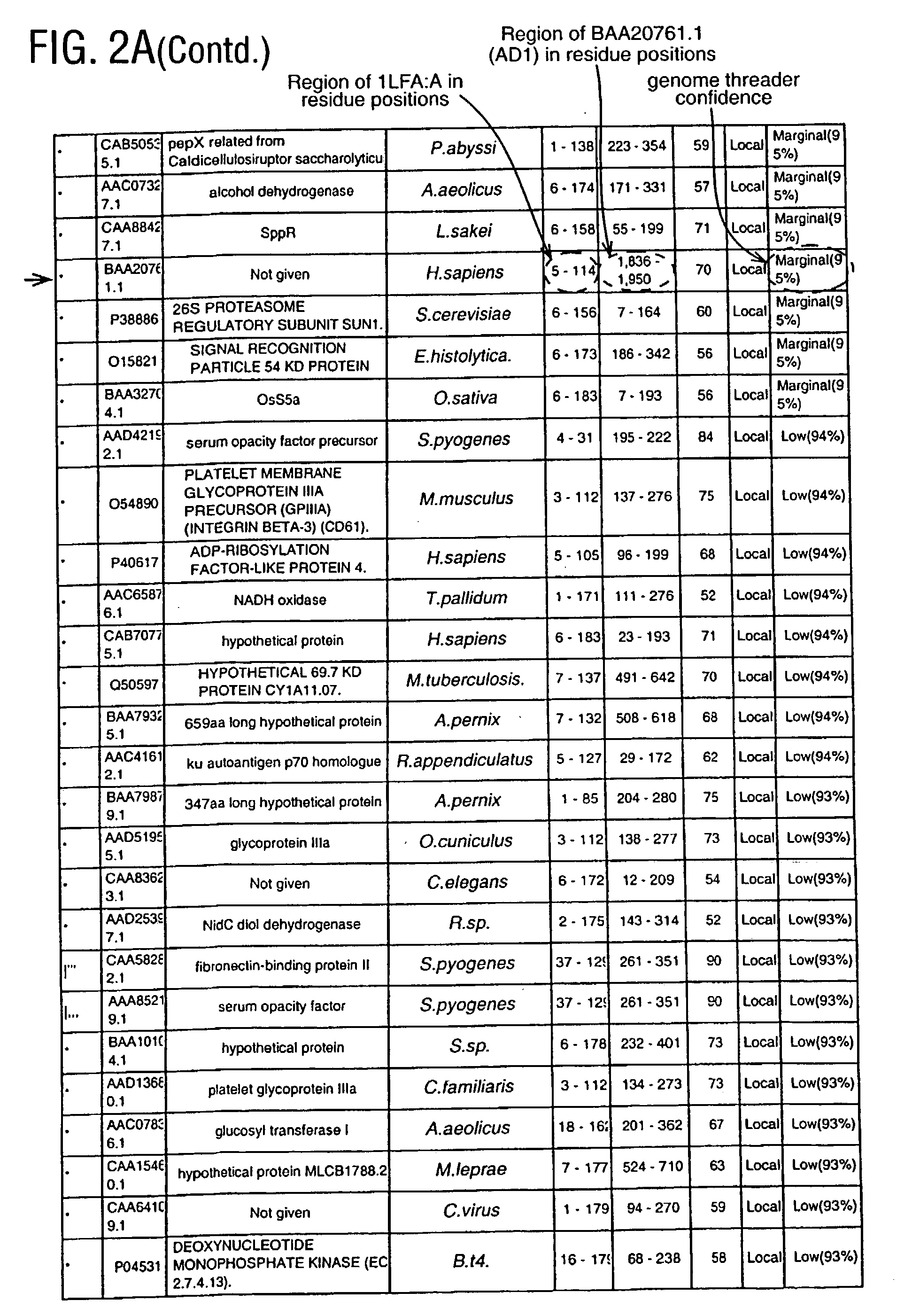Adhesion molecules
a technology of adhesion molecules and molecules, applied in the field of adhesion molecules, can solve the problem of inability to accurately predict proteins with a very low degree of sequence homology, and achieve the effect of increasing the rate of association of molecules
- Summary
- Abstract
- Description
- Claims
- Application Information
AI Technical Summary
Benefits of technology
Problems solved by technology
Method used
Image
Examples
example 1
(BAA20761.1; AD1)
[0398] In order to initiate a search for novel, distantly related integrins, an archetypal family member, Leukocyte Function Associated Molecule-1 (LFA), alpha subunit is chosen. More specifically, the search is initiated using a structure from the Protein Data Bank (PDB) which is operated by the Research Collaboratory for Structural Bioinformatics.
[0399] The structure chosen represents the I domain (insertion domain) of LFA-1, PDB code 1LFA:A (FIG. 1). Lymphocyte function-associated antigen 1 (LFA-1) is a leukocyte integrin that supports inflammatory and immune responses by mediating cell adhesion, the trafficking of leukocytes, and the augmentation of signalling through the T cell receptor. This integrin consists of a CD11a and a CD18 chain and binds to the cell surface ligands intercellular adhesion molecule 1 (ICAM-1), ICAM-2, and ICAM-3. Mutational studies indicate that ICAM-1 interacts with LFA-1 through a module of approximately 200 residues designated the I ...
example 2
G7c (CAB52192.1)
[0417] To initiate the search, the I domain (insertion domain) of LFA-1, PDB code 1LFA:A (FIG. 12) is again chosen.
[0418] Among the known I domain containing adhesion molecules / proteins appears a protein of apparently unknown function, G7c (CAB52192.1; AD2, FIG. 13A). The Inpharmatica Genome Threader.TM. has identified residues 20-126 of this sequence as having a structure similar to the I domain of LFA-1 (PDB code 1LFA:A), the known interaction domain between LFA-1 and ICAM. Having a structure similar to this I domain suggests that G7c (AD2) is a protein that functions in cellular adhesion. The Inpharmatica Genome Threader.TM. identifies this with 98% confidence.
[0419] PSI-Blast (FIG. 13B) is unable to identify this relationship; it is only the Inpharmatica Genome Threader.TM. that is able to identify CAB52192.1 (AD2) as having an I domain. PSI-Blast does identify LFA-1 itself and other related integrins with varying degrees of probability (E value) as would be expe...
example 3
KIAA0564 (AD3)
[0432] In order to initiate a search for novel, distantly related integrins, an archetypal family member, Leukocyte Function Associated Molecule-1 (LFA), alpha subunit is chosen. More specifically, the search is initiated using a structure from the Protein Data Bank (PDB) which is operated by the Research Collaboratory for Structural Bioinformatics.
[0433] The structure chosen represents the I domain (insertion domain) of LFA-1, PDB code 1LFA:A (FIG. 22). Lymphocyte function-associated antigen 1 (LFA-1) is a leukocyte integrin that supports inflammatory and immune responses by mediating cell adhesion, the trafficking of leukocytes, and the augmentation of signalling through the T cell receptor. This integrin consists of a CD11a and a CD18 chain and binds to the cell surface ligands intercellular adhesion molecule 1 (ICAM-1), ICAM-2, and ICAM-3. Mutational studies indicate that ICAM-I interacts with LFA-1 through a module of approximately 200 residues designated the I do...
PUM
| Property | Measurement | Unit |
|---|---|---|
| adhesion molecule activity | aaaaa | aaaaa |
| adhesion | aaaaa | aaaaa |
| adhesion molecule | aaaaa | aaaaa |
Abstract
Description
Claims
Application Information
 Login to View More
Login to View More - R&D
- Intellectual Property
- Life Sciences
- Materials
- Tech Scout
- Unparalleled Data Quality
- Higher Quality Content
- 60% Fewer Hallucinations
Browse by: Latest US Patents, China's latest patents, Technical Efficacy Thesaurus, Application Domain, Technology Topic, Popular Technical Reports.
© 2025 PatSnap. All rights reserved.Legal|Privacy policy|Modern Slavery Act Transparency Statement|Sitemap|About US| Contact US: help@patsnap.com



